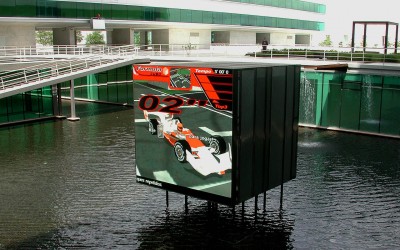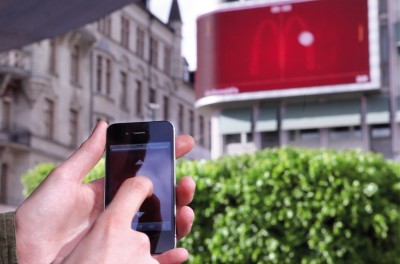By Michael Mascioni
For some time, digital out-of-home (DOOH) was considered a discrete, narrow niche business, far removed from other forms of advertising. That assumption is now changing dramatically, with DOOH increasingly becoming part of cross-media marketing campaigns.
The shift has been driven largely by changes in technology, content distribution, consumer lifestyles and advertising strategies. Online and mobile communications, for example, and the ability to combine physical and virtual experiences have opened new possibilities for DOOH to reach a larger audience, enhance brand awareness and cross-promote products. A greater emphasis on ‘experiential’ marketing favours the kinds of multimedia approaches that can integrate DOOH.
“Convergence is the future of digital signage,” says Rob Gorrie, president of Adcentricity, which operates a broad DOOH network from its offices in Toronto, Chicago, Ill., and New York, N.Y. “It extends marketing opportunities for advertisers and builds closer relationships with consumers.”

Back in 2002, the Vodafone Cube in Lisbon, Portugal, allowed visitors and employees to interact with multiplayer games, videos and other content displayed on a large screen. Photos courtesy YDreams
Indeed, multi-channel marketing campaigns incorporating DOOH fit in well with overall marketing trends toward more user-centric brand experiences, which often involve a greater element of play through games and other initiatives.
“Combining mobile, online and OOH elements is the only way to present a truly interactive marketing campaign in public places,” says Steve King, VP of sales for LocaModa, which develops social media applications for digital signage platforms.
The ultimate remote control
Digital signage can allow passersby to interact with large-screen games and other content, for example, by letting them use their smart phone or other mobile device as a ‘remote control.’ Exploiting the ubiquity of mobile phones—and, for that matter, web connections to digital signage, which were not typical in the early days of the medium—a popular context is created for interactive marketing in public spaces.
“Mobile interactivity dramatically shifts the digital signage paradigm from one-to-many to one-to-one communications,” says H. Jay Patel, president of BlueFire Digital, a Silicon Valley provider of mobile marketing platforms. “Mobile is comfortable for users, as it does not force them to interact at arm’s length, like a kiosk does. It eschews the need to learn how to use a new device.”
The advantages of this approach include targeting audiences better, providing more measurable advertising impact, linking various interactive media, tapping into social networks and deepening the consumer’s association with a brand and promoting greater public acceptance of mobile marketing.
“It is a powerful tool, bringing consumers closer to brands,” says Patel.






